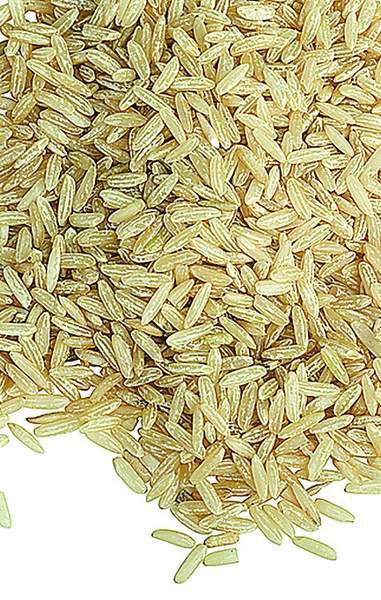Arsenic in rice not risky
Published 5:00 am Thursday, October 4, 2012

- Thinkstock
If you’ve eaten rice in the last week, you’ve eaten arsenic. That’s also true if you’ve eaten fruit or fish, or had a glass of water.
The good news, however, is that you likely don’t need to be concerned. Arsenic is a naturally occurring heavy metal, and exposure to low levels is inevitable.
Concern about arsenic in food — particularly in rice — has increased lately, in part because Consumer Reports published test results that indicated rice had arsenic levels above the standards that the Environmental Protection Agency sets for water.
The limit for water is 10 parts per billion, which is tantamount to droplets in an Olympic swimming pool. The Food and Drug Administration also tested hundreds of samples of rice and detected arsenic. Levels ranged from 6.7 micrograms (millionths of a gram) per cup of cooked non-Basmati rice to 3.5 micrograms per cup of cooked Basmati rice and rice cereal.
Based on these results, Consumer Reports advocated that consumers reduce their consumption of rice and rice products. But the FDA does not recommend that Americans change their eating habits in order to reduce their rice intake.
Eating arsenic
Arsenic can be either organic or inorganic, the former distributed in the Earth’s crust, the latter caused by things like pesticides or ore processing. It is found in the soil, in water and even in the air.
Lengthy exposure to elevated levels of inorganic arsenic has been shown to produce long-term health effects, such as changing skin pigmentation, warts and an increased risk of certain types of cancer. In high doses it is fatal.
Arsenic enters the food supply because crops absorb trace amounts of the metal from the soil and water. Therefore, the level of arsenic in an area’s soil usually determines how much will be present in its food. Rice is particularly sensitive to this, as it tends to absorb arsenic more readily than other grains, according to the FDA.
Because where rice is grown can have a significant effect on how much arsenic is present, tests revealed a large variation of arsenic levels found in food. Even different samples of the same product produced different results.
“It’s really important that we eat a variety of things from a variety of places,” said Julie Jones, a professor of food and nutrition at St. Catherine University in Minnesota. “Not getting all your produce from one area helps you minimize your risk.”
Is there a risk?
While Consumer Reports urged Americans to reduce their rice intake, the FDA disagreed. The FDA has monitored arsenic levels in rice for more than 20 years, and has detected no change in the total levels of arsenic in the grain. Based on this data and current scientific literature, the FDA has issued statements recommending that consumers continue to eat a balanced diet that includes rice.
“All food we eat has an upside and a downside,” said Jones. “By focusing on this one thing, this toxicity, you miss the benefits.”
Rice is primarily a carbohydrate, but according to Julie Hood Gonsalves, a registered dietitian and associate professor of health at Central Oregon Community College, it also provides several vitamins and minerals, including vitamins B1 and B3.
“Brown rice in particular … has a ton of fiber in it, which is really good,” Gonsalves said. “Brown rice has a huge amount of manganese.”
Manganese is important for skeletal growth and metabolism, and according to Gonsalves, “You could eat a portion of rice and get most of the manganese that you need for the day.”
Reducing rice intake may therefore have an impact on the minerals that are present in the diet. Jones cautioned that it was important to understand any potential risks — such as deficiencies — as well as benefits before recommending any sort of limitations on rice.
Jones also said that limiting the levels of arsenic in rice to the standards set for water would be too restrictive, since people consume far more water in a day than rice.
“It seems to me that we’re jumping to the scare before we have any adequate data to support the scaring,” she said.
Instead of limiting rice consumption, Jones, like the FDA, suggested that we should eat a balanced diet of many types of whole grains, fruits and vegetables. This, she said, will provide a range of vitamins and minerals in the diet, which might counteract any ill effects some metals, such as arsenic, have on the body.
Jones’ advice: “Let’s concentrate on not being low on things that help.”
What can a consumer do?
In addition to eating a diet rich in whole grains, fruits and vegetables, those concerned about arsenic in their diets can take additional steps to reduce their exposure.
Well-water drinkers should have it tested for arsenic. People with adequate intakes of calcium, zinc and selenium have lower risk, according to Jones.
Consumer Reports also suggested cooking rice in six cups of water for every one cup of raw grain and pouring off the excess liquid once the rice is tender. This can wash away some of the arsenic, though it also will rinse off beneficial minerals.
“You’re still getting the carbohydrates, those aren’t going away, but the vitamins would,” said Gonsalves. “The fiber wouldn’t go away either.”
For those who do wish to reduce their rice consumption, Gonsalves recommended replacing the grain with other carbohydrates, such as whole-grain pasta.
“Corn and potatoes are pretty much the starch bases,” she said, for people who are gluten-intolerant and can’t replace rice with wheat products.
Consumer Reports also recommends that gluten-intolerant people experiment with other grains, such as quinoa or amaranth. They, like most whole foods, will likely have trace amounts of arsenic, but at lower levels than rice.






